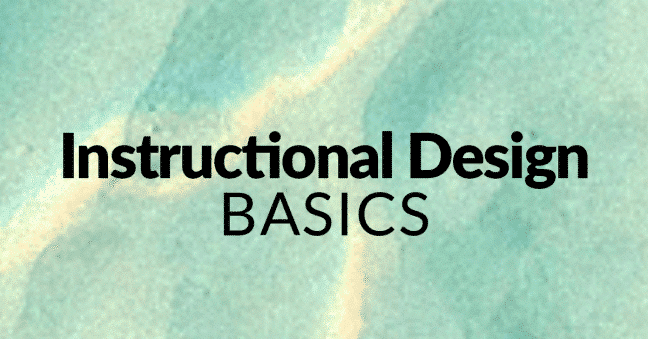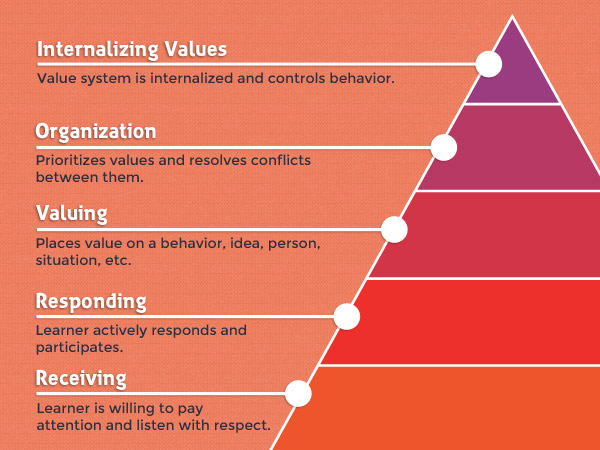January 29, 2014 4 min read
Teaching Attitudes: The Affective Domain of Learning and Learning Objectives
Industry:
Solution:
[This is the eighth in a series of posts about learning objectives. We’ve now compiled all the posts into a single downloadable guide to writing learning objectives if you want to check that out.]
As we mentioned in a previous post, there are three different kinds of learning: learning about things you can “know,” learning about things you can “do,” and learning about things you “feel.” We will refer to these as knowledge, skills, and attitudes, or “KSAs” for short.
In this post, we’re going to consider the “attitudes” domain more closely. The information below is based on the theories of Krathwohl, Bloom, and Masia (1973), and it relies greatly on explanations of those theories that appear Don Clark’s well known “Big Dog Little Dog” instructional design blog. Check out Clark’s material on learning domains to read more about this and to learn about alternate versions of this hierarchy and other learning hierarchies.
You can use this information to create a more effective workforce training program.

Vector EHS Management Software empowers organizations – from global leaders to local businesses – to improve workplace safety and comply with environmental, health, and safety regulations.
Learn more about how our software can save you valuable time and effort in recording, tracking, and analyzing your EHS activities.
Learn more about how we can help:
- Incident Management Software →
- EHS Inspection Software →
- Key Safety Metrics Dashboard →
- Learning Management System (LMS) and Online Training Courses →
- Mobile Risk Communication Platform
Download our EHS Management Software Buyer’s Guide.
The Affective Domain of Learning & Learning Objectives
The affective domain can be broken down into a hierarchy. The hierarchy includes 5 different levels of attitudes, from the simplest to the most complex. We’ll list and explain each below, and we’ll give a list of behaviors that learners must perform to show they’ve mastered the attitude at each level. This will help you pick the verb you’ll use when writing learning objectives dealing with skills.

Five Levels of Attitudes
The attitudes in the affective domain are divided into five different levels, ranging from the most simple–basically the willingness to pay attention–to the most complex–when a person’s behaviors are consistently controlled by their value system. They represent not so much different kinds of attitudes but rather different degrees. The five levels of attitudes, in order from simplest to most complex, are:
- Receiving: Learner is willing to pay attention and listen with respect.
- Responding: Learner actively responds and participates.
- Valuing: Learner places value on a behavior, idea, person, institution, etc.
- Organization: Learner prioritizes values and resolves conflicts between them.
- Internalizing values: Learner’s value system is internalized and controls his or her behavior.
The levels of the attitudes domain are often represented as different levels of a pyramid, with receiving, the simplest level, making up the bottom of the pyramid and internalizing values, the most complex level, making up the top.
Creating Stronger “Attitudes” Learning Objectives for the Affective Domain
Now, let’s apply what we just discussed above to the best way to write a learning objective. You probably remember that when you write a learning objective, one part of the objective describes a behavior the learner must perform, and this behavior is expressed as a verb within the objective. So, we can make it easier to write a learning objective by coming up with a collection of verbs that describe behaviors in each level of the attitudes taxonomy above. Check out the list below to get some ideas.
- Receiving: asks, chooses, describes, follows, gives, holds, identifies, locates, names, points to, selects, sits, erects, replies, uses
- Responding: answers, assists, aids, complies, conforms, discusses, greets, helps, labels, performs, practices, presents, reads, recites, reports, selects, tells, writes
- Valuing: completes, demonstrates, differentiates, explains, follows, forms, initiates, invites, joins, justifies, proposes, reads, reports, selects, shares, studies, works
- Organization: adheres, alters, arranges, combines, compares, completes, defends, explains, formulates, generalizes, identifies, integrates, modifies, orders, organizes, prepares, relates, synthesizes
- Internalizing values: acts, discriminates, displays, influences, listens, modifies, performs, practices, proposes, qualifies, questions, revises, serves, solves, verifies
To see a longer list of attitudes-related verbs for your learning objectives, click here.
Keep these different levels of the “attitudes” in mind, and the verbs to use when writing learning objectives for each level, and you’ll not only create better learning objectives, you’ll create better training materials too.
Good luck with this, and let us know if you’d like some information about online training courses for your workforce, an LMS for workforce training management, and/or custom workforce training materials.
More About Learning Objectives and Bloom’s Taxonomy
For even more on learning objectives, check out any of the articles below.
- What Is a Learning Objective?
- Why Create Learning Objectives?
- The SMART Test for Learning Objectives
- Four-Part ‘ABCD’ Learning Objectives
- Bloom’s Taxonomy of Learning Objectives
- Cognitive Learning Objectives
- Psychomotor Learning Objectives
- Affective Learning Objectives
- Robert Mager’s Performance-Based Learning Objectives
Blended Learning Solutions Guide
Download Now



















